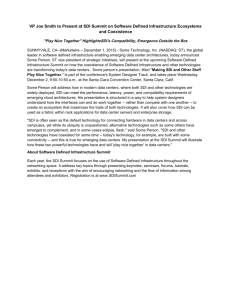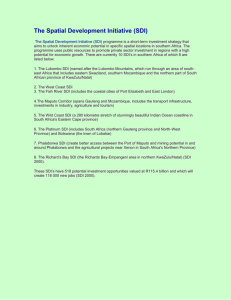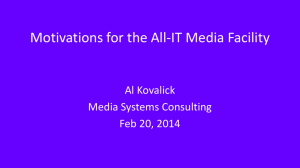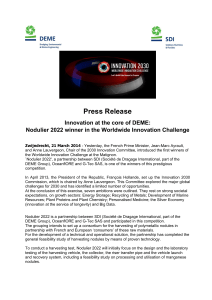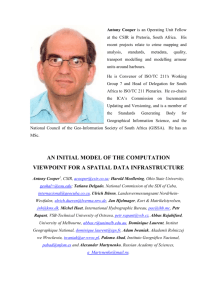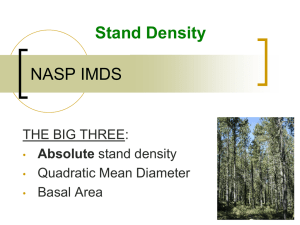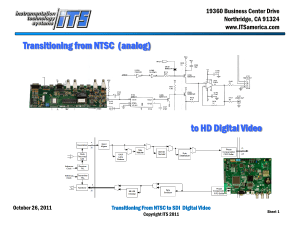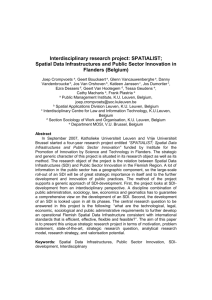The Evolving Metrics for Corporate Sustainability
advertisement
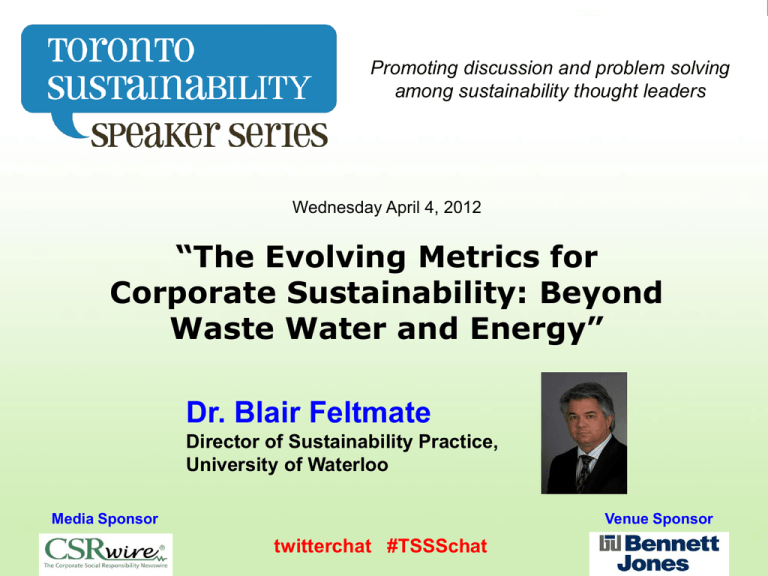
Promoting discussion and problem solving among sustainability thought leaders Wednesday April 4, 2012 “The Evolving Metrics for Corporate Sustainability: Beyond Waste Water and Energy” Dr. Blair Feltmate Director of Sustainability Practice, University of Waterloo Media Sponsor Venue Sponsor twitterchat #TSSSchat The Value and Process of Developing a Sustainable Development Index (SDI) Toronto Sustainability Speakers Series April 04, 2012 Dr. Blair Feltmate Director, Sustainability Practices, Faculty of Environment, University of Waterloo Chair, Climate Change Adaptation Project (Canada) bfeltmat@uwaterloo.ca Overview 1. General Observations on Corporate SD Reporting 2. Case Study: Purpose and Characteristics of the SDI, Canadian Electricity Association 3. SDI: Weighting and Scoring of Performance Metrics 4. SDI 2010 Thresholds & Score 5. SDI for 2006-2010 (2004/05 base years) 6. Next Steps Page 3 Corporate Sustainable Development Reporting: General Observations 1. Canadian corporations produce about 150 Sustainable Development Reports annually, and 3,000 are produced globally 2. Since Place Dome Inc. produced Canada’s first Corporate Environmental Report (early 1990s), followed by Noranda Inc. and Falconbridge Ltd., the look and content of SD/Environmental Reports has not changed much 3. SD Reports are not generally well reviewed/embraced by the financial community (e.g., financial analysts, institutional and retail money managers, institutional money management consultants, VPs Finance, etc.) 4. SD Reports are often difficult for Boards of Directors and Senior Management to fully appreciate/digest To remedy this omission, SD Reports must be changed in at least two ways: A. Sustainable Development Index B. Identification of 3-6 key SD metrics, that financial analysts can readily translate into financial value creation, presented up-front in SD Reports Page 4 Purpose and Characteristics of the Sustainable Development Index Purpose of the SDI The SDI enables the CEA and all stakeholders to determine if the CEA membership is collectively trending “better or worse” in reference to SD – NOTE: the SDI could be applied to any association, company or government enterprise Characteristics of SDI The SDI includes measures of environmental, social and economic performance The SDI is predisposed to transparency regarding the relative contribution of environmental, economic and social performance metrics to the index The SDI is “simple” to calculate The SDI is predisposed to being amended/updated Page 5 Weighting and Scoring of Performance Metrics: Consensus Reached in 2009/2010 SDI can (and does) have an unbalanced number of metrics within each category of Environment, Society and Economy Each SDI category of Environment, Society and Economy is given equal weighting in the SDI calculation, regardless of the number of metrics per category Scoring for a given metric in a given year is made relative to a % change in performance relative to the average of the base years 2004/05 o 2004/05 were chosen as base years due to (a) data availability, (b) integrity of data, (c) a mean of 2 years helps to lesson the impacts of a single ‘anomalous” year, and (d) going back “too far” may be perceived as compromising the rigour of the analysis A score is determined relative to a % change in performance based on pre-assigned criteria o pre-assigned criteria were established based on a sensitivity analysis of annual variation in criteria performance Page 6 Current SDI Parameters Environment NOx Total NOx Intensity SO2 Total SO2 Intensity CO2 eq. Total Spills SF6 % of companies with ISO Consistent EMS Society All Injury/Illness Frequency Rate Lost Time Injury Frequency Rate Lost Time Injury Severity Rate % of companies producing a public Sustainability report % companies with a public education program % of companies with an Aboriginal Relations group/senior advisory position % of companies with business relationships or partnerships with Aboriginal communities % of companies with procedures or practices to ensure training & employment opportunities for Aboriginal employees Total value of annual company charitable donations ($) Economy Total capital expenditures on new / refurbished generation infrastructure ($/yr) Total capital expenditures on new / refurbished transmission infrastructure ($/yr) Total capital expenditures on new / refurbished distribution infrastructure ($/yr) System Average Interruption Duration Index (SAIDI) System Average Interruption Frequency Index (SAIFI) Total Energy saved through external energy conservation initiatives Page 7 SDI – 2010 Environment Thresholds & Score 0 0% relative to base yrs 25 <6% decrease relative to base yrs 50 >6% decrease relative to base yrs Score: 61.11 Page 8 SDI Summary for 2006-2010 SDI Summary 2006-2010 2006 2007 2008 2009 2010 Page 9 Overall Environmental Social Economic 8.54 2.92 28.33 55.42 53.33 28.13 6.25 62.50 62.50 56.25 12.50 12.50 12.50 43.75 68.75 -15.00 -10.00 10.00 60.00 35.00 SDI for 2006 – 2010 (04/05 base yrs) 100.00 CEA Sustainable Development Score (Based on Data Variability) 75.00 50.00 25.00 Environmental 0.00 2006 Social 2007 2008 -50.00 -75.00 Page 10 2010 Economic Linear (Overall) -25.00 -100.00 2009 Year Next Steps SDI Broad Application • associations and companies across all industry sectors could develop and present similar style SDIs • SDIs could be presented on the inside front cover of SD and related reports • SD is generally not on the “radar screen” of financial analysts, retail and institutional money managers, and institutional money management consultants – SDIs could contribute to turning this situation around • SD reports have not evolved much in the past 15 years – SDIs could offer change that would be positively received by key stakeholders (notably senior management and Boards) Page 11
